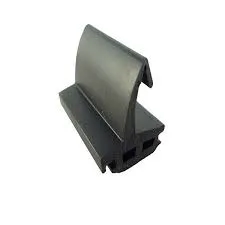Rubber seals are essential in lots of areas; they guarantee the watertightness of fluid systems at home, in cars and in several industries. All of these gaskets, however, have very diverse uses that require rubbers with specific properties. A natural rubber will have to be exposed as least as possible to UV, while a synthetic will be treated to resist the sun, one will be resistant to chlorine and the other to oils, etc. Although most rubbers have similar physical characteristics (elongation, hardness, color, etc.), the chemical characteristics of a rubber strongly depend on its "quality" (understand rubber “type”). Let's take a closer look at which rubber seal is suitable for which situation.
EPDM quality gaskets
EPDM (ethylene-propylene-diene monomer) is used to make seals in lots of fields (for roofs, taps, washing machines, dishwashers, automobiles). It is resistant to UV, acid environment, high or low temperatures (-25 to 90 °C), ozone and flame-resistant hydraulic fluids such as brake fluids. On the other hand, EPDM rubber does not support aromatic (eg: gasoline), aliphatic (eg: methane) and chlorinated (eg: solvent) hydrocarbons. The best maintenance of an EPDM seal is done when installed, the less it is subjected to constraints in the duration, the longer the lifetime of the seal.
neoprene rubber gasket with customized size and color sealing water and rubber flange gasket
FKM (Viton) and NBR (nitrile) seals
The gaskets used for sealing in the chemical industry, are mainly made of nitrile rubber (NBR) and fluorocarbon rubber (FKM). Highly impervious to gases, the Viton FPM seals are resistant to mineral oils, aromatic and aliphatic hydrocarbons (gasoline, propane, butane), to diesel and fire-resistant fluids (HFA, HFB and HFC groups). In addition, it does not fear temperatures reaching 200 °C. On the other hand, it is not resistant to ketones and hydraulic fluids that are difficult to ignite, such as brake fluid. Nitrile (NBR) rubber has better mechanical properties, but does not withstand temperatures exceeding 110 °C. The chemical resistance is less; nitrile is poorly resistant to chlorinated hydrocarbons, esters, polar solvents and hydraulically flammable fluids. To maintain an FKM or NBR seal, paraffin can be used after meticulously cleaning the seal surface with a solvent and a paper without dust.
CR (Neoprene) quality seals
Used for waterproofing in aquatic environments, CR-grade rubber has a good resistance to alkalis (chlorine, bromine, fluorine or iodine), it also has good resistance to UV (less than EPDM). Neoprene seals are resistant to oils, greases, hydrocarbons and alcohols making it a highly used product in the chemical, automotive and marine industries.
Silicone seals
Silicone is a material that has a remarkable resistance to aging and extreme temperatures (withstands temperatures from -50 to + 180 °C). This material is widely used for medical installations and in the food industry because it does not affect the products with which it comes into contact. Silicone seals are resistant to alcohols and ketones but have high permeability to gases. Silicone seals are typically found in mixers or other coffee machines.


